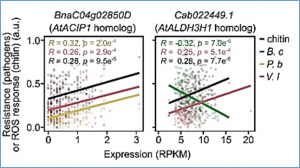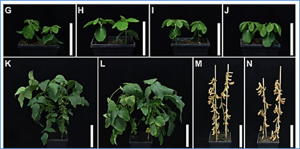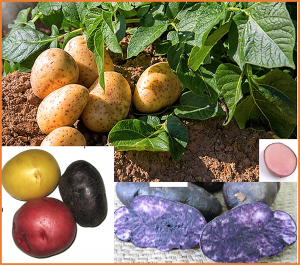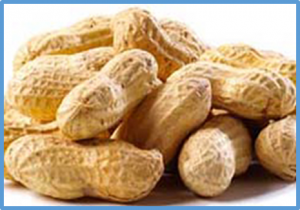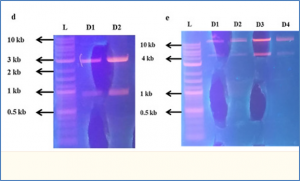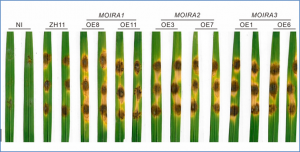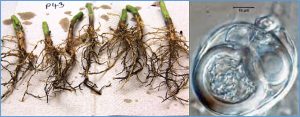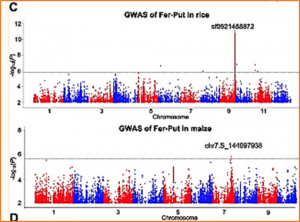Crops are affected by several pathogens, but these are rarely studied in parallel to identify common and unique genetic factors controlling diseases. Broad-spectrum quantitative disease resistance (QDR) is desirable for crop breeding as it confers resistance to several pathogen species. Here, we use associative transcriptomics (AT) to identify candidate gene loci associated with Brassica napus constitutive QDR to four contrasting fungal pathogens
Soybean (Glycine max (L.) Merr.) is a major source of vege-table protein and oil in human diet and animal nutrition.Soybean seeds have been extensively used in various foodproducts and snacks. Taste quality, particularly the aroma, af-fects cooking and eating, and ultimately influences consumerpreference. Soy milk is particularly popular in China and hasbeen gaining popularity in many other countries in the world.
The C3HC4 RING finger gene (RING-HC) family is a zinc finger protein crucial to plant growth. However, there have been no studies on the RING-HC gene family in potato. In this study, 77 putative StRING-HCs were identified in the potato genome and grouped into three clusters based on phylogenetic relationships, the chromosome distribution, gene structure, conserved motif, gene duplication events, and synteny relationships, and cis-acting elements were systematically analyzed.
Cytochrome P450 monooxygenases (CYP450s) play a crucial role in various biochemical reactions involved in the synthesis of antioxidants, pigments, structural polymers, and defense-related compounds in plants. As sweet potato (Ipomoea batatas L.) holds significant economic importance, a comprehensive analysis of CYP450 genes in this plant species can offer valuable insights into the evolutionary relationships and functional characteristics of these genes.
The plant hormone ethylene plays a critical role in fruit defense against Botrytis cinerea attack, but the underlying mechanisms remain poorly understood. Here, we showed that ethylene response factor SlERF.C1 acts as a key regulator to trigger the ethylene-mediated defense against B. cinerea in tomato fruits without compromising ripening.
Sucrose content is a crucial quality trait for edible peanuts, and increasing sucrose content is a key breeding objective. However, the genetic basis of sucrose content in peanut remains unclear, and major quantitative trait loci (QTLs) for sucrose content have yet to be identified. In this study, a high-density genetic map was constructed based on whole-genome re-sequencing data from a peanut RIL population.
Fungal pathogens are one of the major reasons for biotic stress on rice (Oryza sativa L.), causing severe productivity losses every year. Breeding for host resistance is a mainstay of rice disease management, but conventional development of commercial resistant varieties is often slow. In contrast, the development of disease resistance by targeted genome manipulation has the potential to deliver resistant varieties more rapidly.
Rice blast disease, caused by the fungal pathogen Magnaporthe oryzae, is a major threat to rice production worldwide. This study investigates the role of long non-coding RNAs (lncRNAs) in rice’s response to this destructive disease, with a focus on their impacts on disease resistance and yield traits. Three specific lncRNAs coded by M. oryzae infection-responsive lncRNAs (MOIRAs),
Phytophthora root rot (PRR) is one of the most important diseases in soybean (Glycine max). PRR is well known to be caused by Phytophthora sojae, but recent studies showed that P. sansomeana also causes extensive root rot of soybean. Depending upon the isolate, it might produce aggressive symptoms, especially in seeds and seedlings.
Plants orchestrate drought responses at metabolic level but the genetic basis remains elusive in rice. In this study, 233 drought-responsive metabolites (DRMs) were quantified in a large rice population comprised of 510 diverse accessions at the reproductive stage. Large metabolic variations in drought responses were detected, and little correlation of metabolic levels between drought and normal conditions were observed. Interestingly, most of these DRMs could predict drought resistance in high accuracy.


 Curently online :
Curently online :
 Total visitors :
Total visitors :
